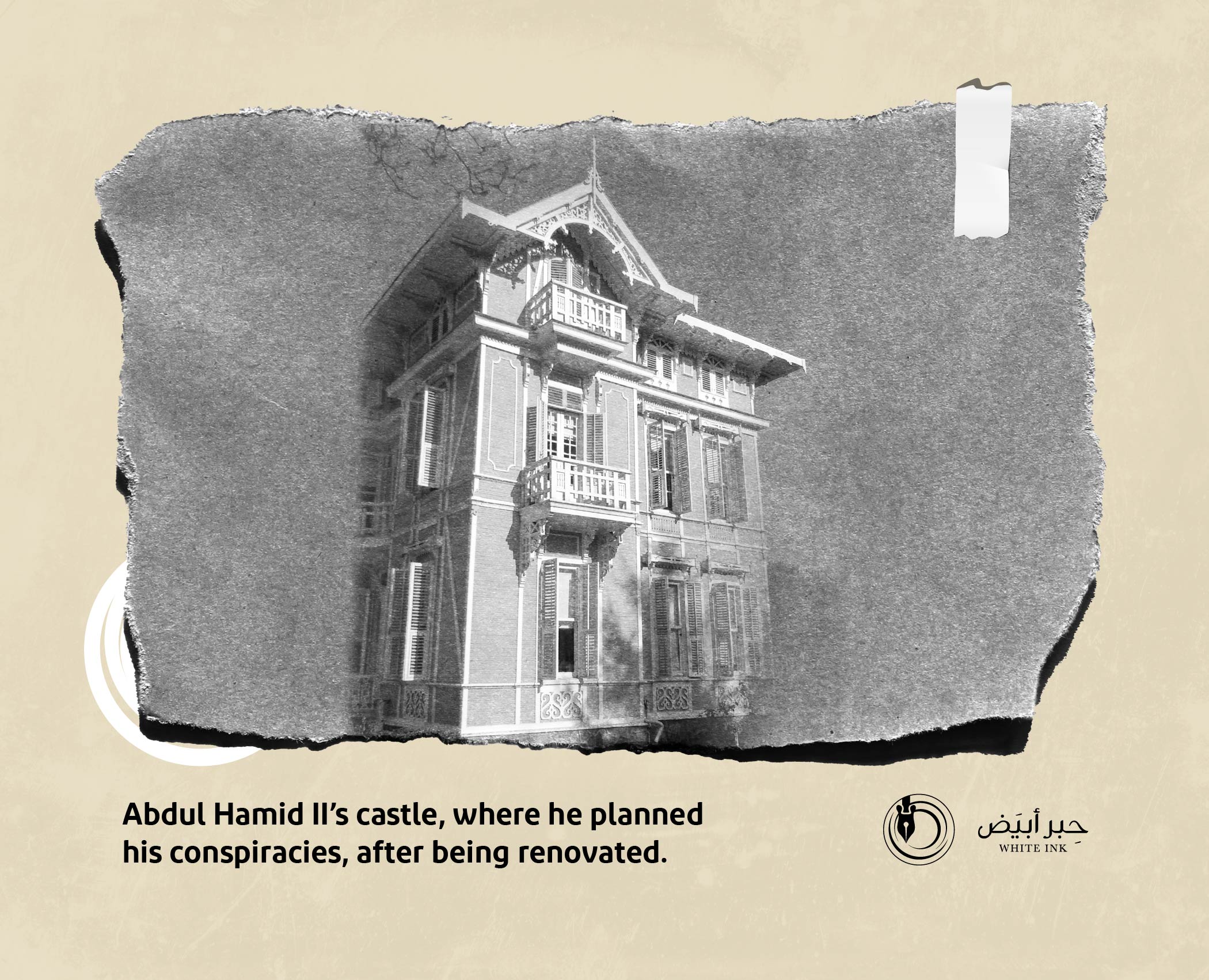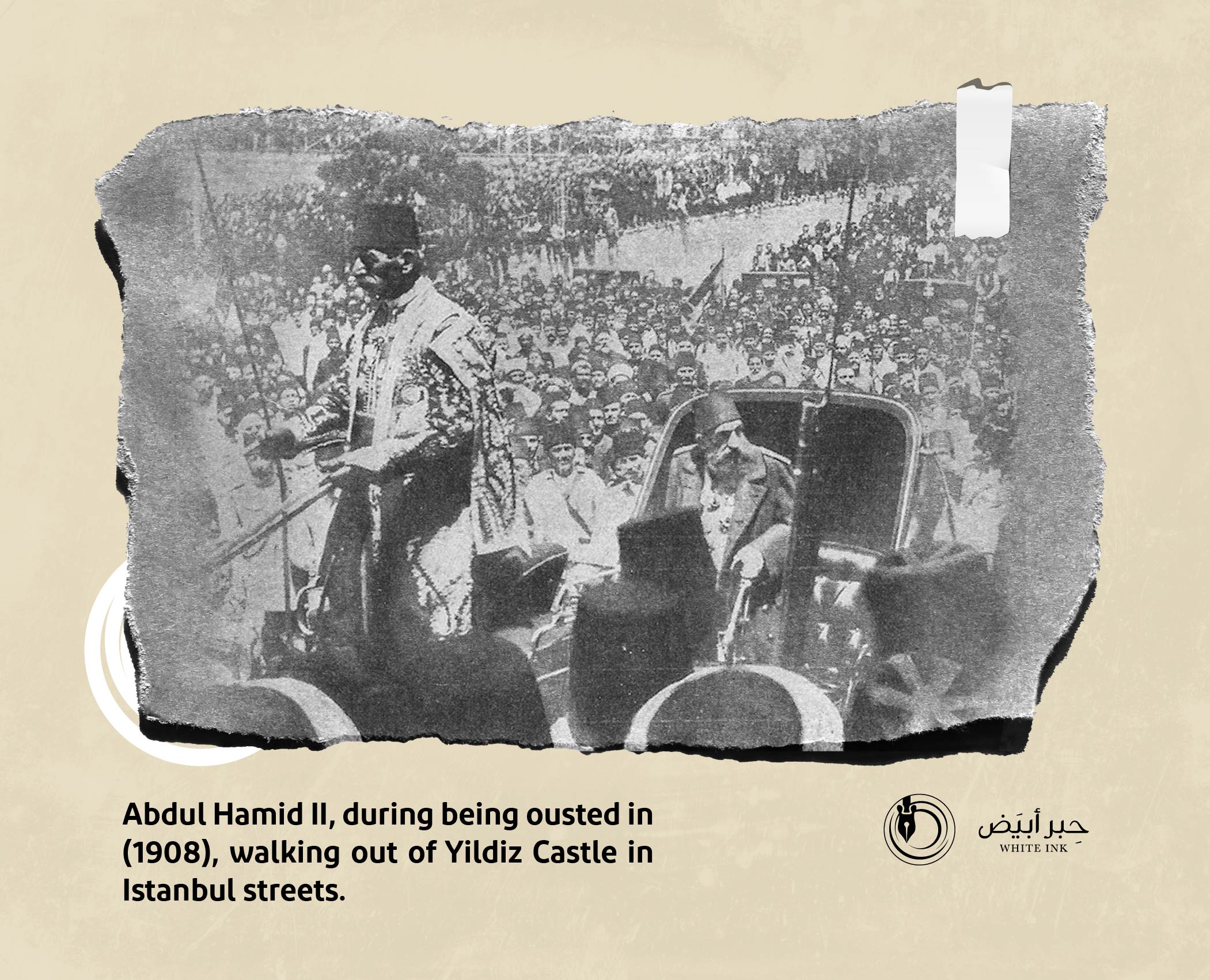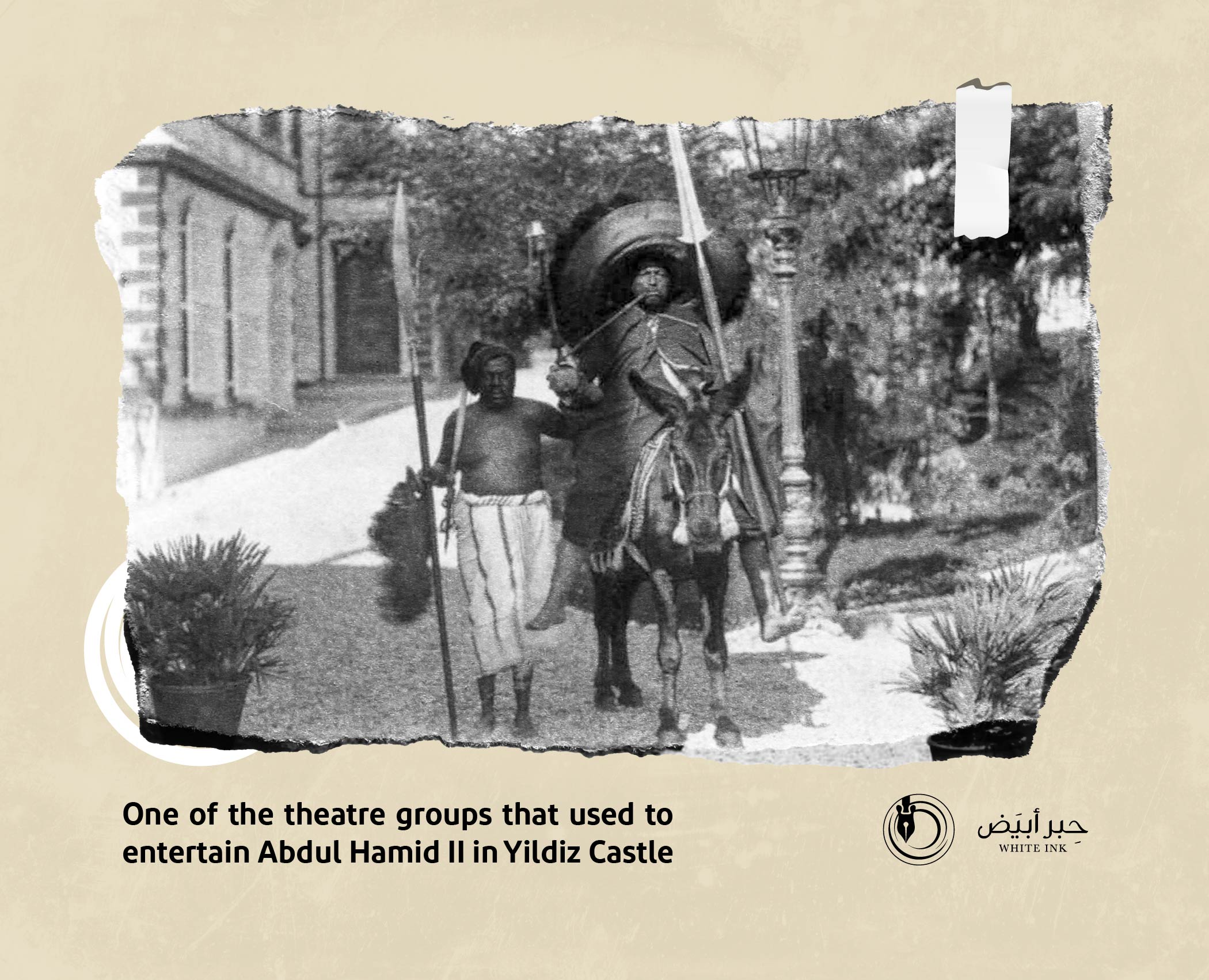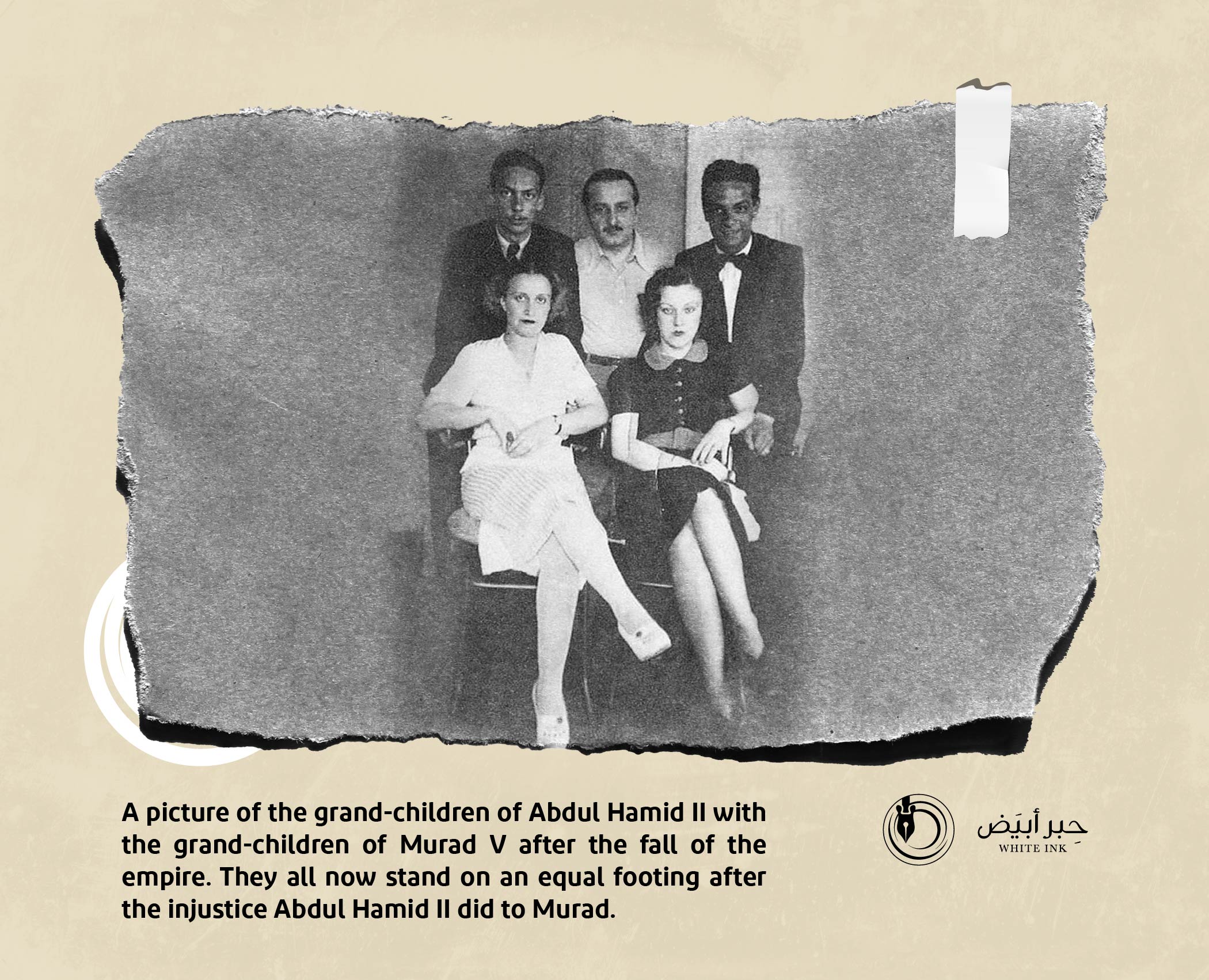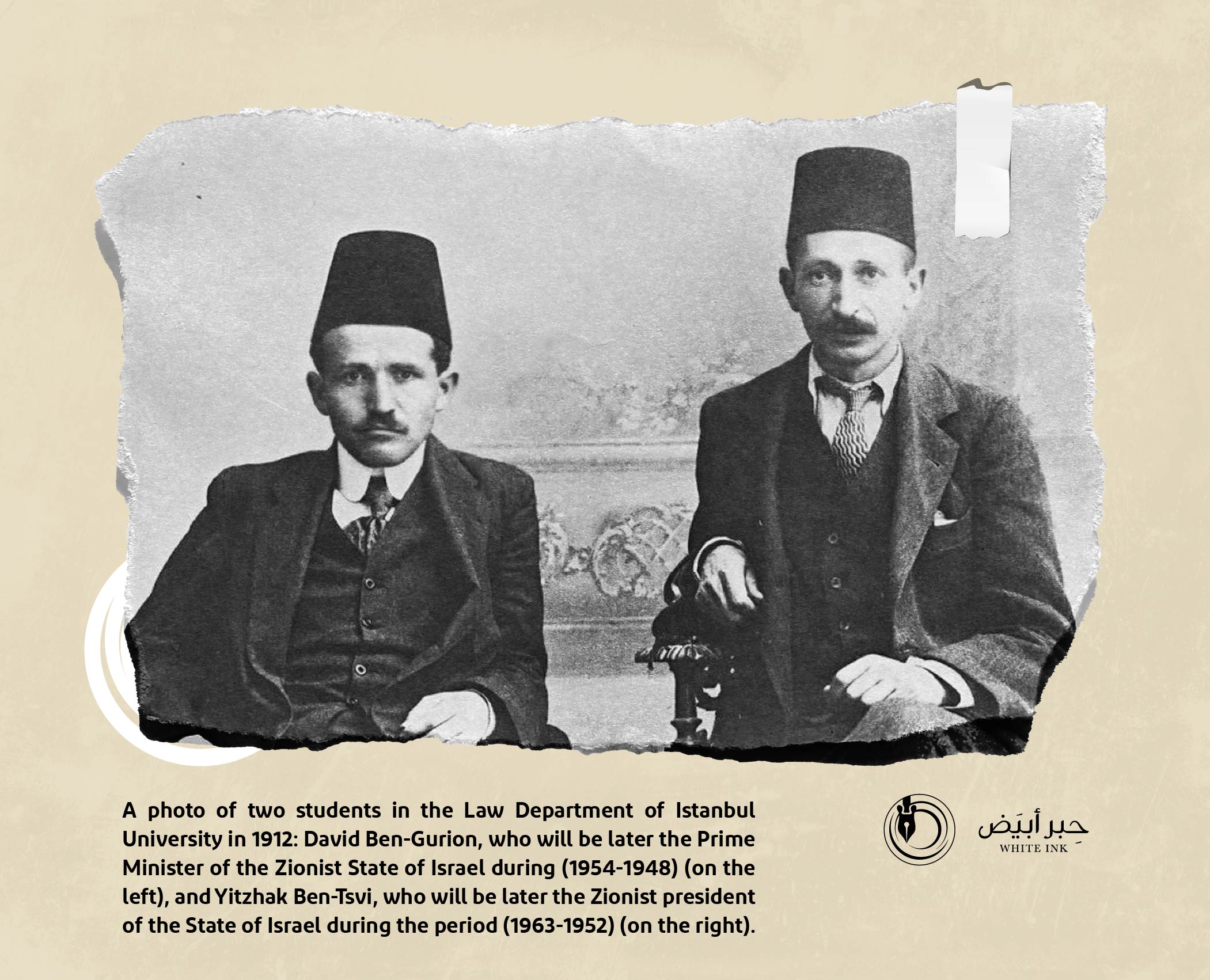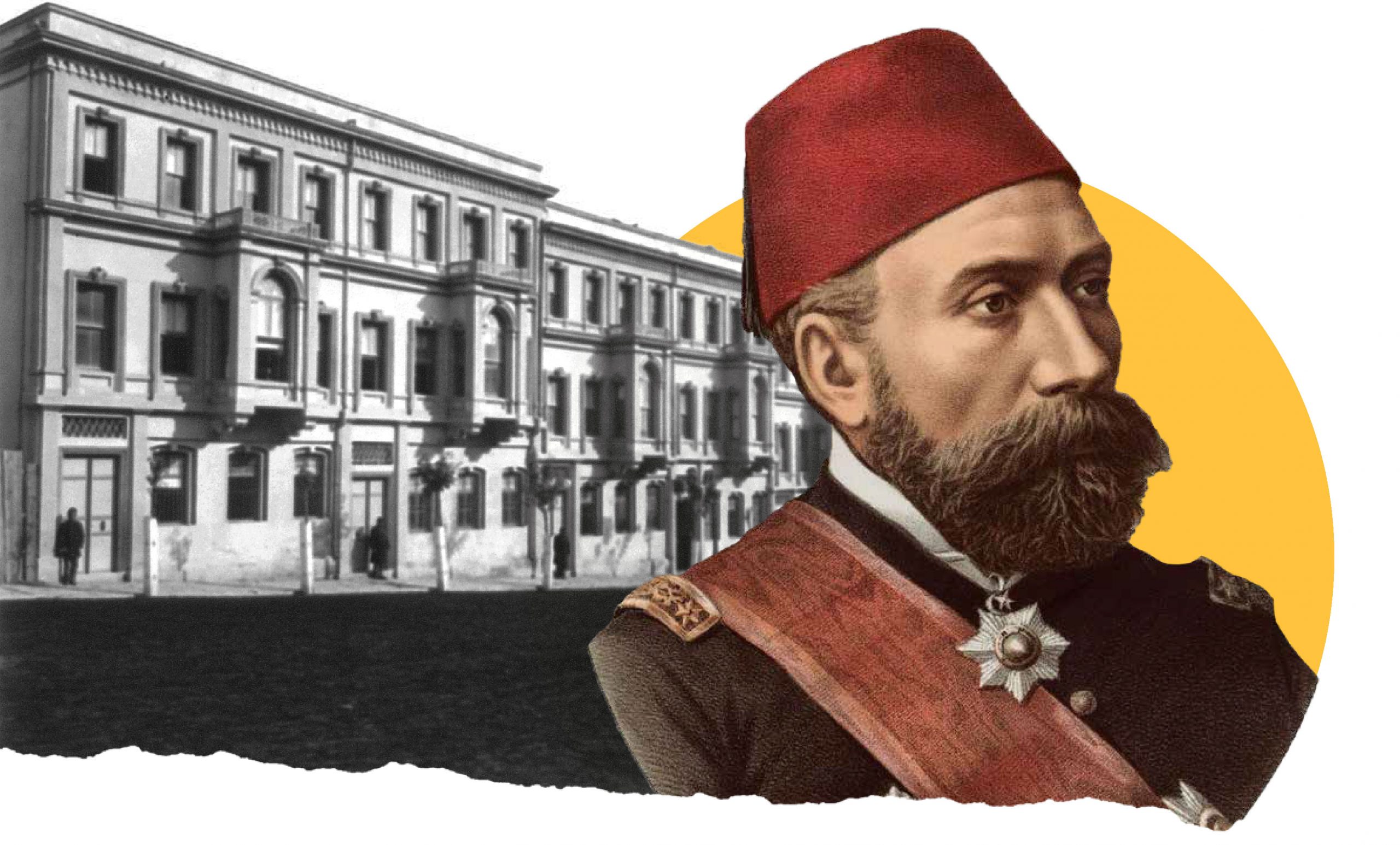
Beyond Education ... Abdul Hamid Established It for a Colonial Political Objective
The School of "Tribes”
Caused Ethnic-Related Problems and Acts of Violence
As the crises of the Ottoman escalated during the 19th century, it was a difficult century for their empire, which seemed to be weakened and languish in terms of the system of governance and administration. Therefore, their sultans tried to restructure their state through some political, military, judicial and administrative reforms. On the other hand, they were struggling to control separatist movements and trying to take action against rebels in several parts of their empire.
Among the most primary problems that were faced by the Ottoman State, was the tribal concentrations of nomadic population on both of its near borders and the far occupied borders. That were traveling among valleys, mountains and agricultural areas; and causing some chaos. Because of the weakness of the Ottoman administration and its inability to control that. So the farmland suffered indiscriminate destruction as a result of this chaos, and the acts of pillage and plunder that were being carried out in front of the Ottomans without any reaction to control that chaos.
Where the local population experienced the confrontation of anarchist groups that used to mugging, pillaging and looting. As no one of those who represented the Ottoman power was listening to the complaints of the local people. Particularly during the period in which the Ottoman State was suffering from the phase of disintegration and its weak control over the far regions. Consequently, Rebellion in eastern Anatolia became common act in the late 19th century. When giving permanent residence and education for tribes were not an issue that to be disregarded in respect to the survival of the Ottoman State.
He intended to produce a generation that was extolling the Ottoman State and maintaining the loyalty of the tribes.

That proposal of Ottoman Nuri was accepted by Abdul Hamid II, especially since he was aware that the Arabs in particular had reached the extent of complete awareness during his era. As they had taken four centuries of time by the Ottomans, who were not concerned for the renaissance of the Arabs as much as they were concerned to benefit from the blessings of their country and transform them to be in a lower rank than the Turks. Further, they gave powers and leadership positions to the Turks. Therefore, Abdul Hamid II initiated the phases of establishing the Tribal School in Istanbul, intending to qualify the teachers that would be devoted to the sons of the tribes and to teach them in their country. However, this was not to educate them and eradicate their illiteracy, yet to impose the Ottoman culture on them. As well as to be assigned to serve only the Sultan and his state. So the vision and objective behind this school were merely a colonial objective. Where it was aimed at the children from the age of 12 to 16 years; and it set specifics for these children, who must to be children of influential families and sons of tribal leaders.
During the foundational steps of this tribal school, the emphasis was placed on carefully selecting educational curricula, especially with regards to history courses. As they ensured that the Ottomans to be highlighted and portrayed as conquerors and righteous people. In addition, they emphasized that the Arab lands before the Ottoman colonialism were in deplorable conditions, while after it they were developed and improved. As this is an explicit fallacy to historical facts. So, this was why Abdul Hamid II was aiming at ideologizing the history and directing it in an approach that primarily serves his colonial interests. Even if that is at the expense of scientific and historical truth. Moreover, among these objectives was to portray the Ottomans as being great in all fields, so that giving them respect that established a blind loyalty to their colonialism.
The preparation for the tribal school was activated since (1892) by qualifying teachers in Omar Effendi Street in Tashmirmani area of Kabatash. While this step was promoted in broad information, which was showing the concern of Abdul Hamid II to this school and his ambition to achieve its political objectives. Where the duration of the study in these schools was determined to be five years, then it was reduced to be four years. As well as an expansion plan was developed for it, starting from Istanbul and then to expand its branches in all Arab regions. Yet, simultaneously with the establishment of these schools, the Ottoman State was forced to rename the school to be preparatory school instead of tribal school. As they were concerned that the Arabs and other non-Turkish races might understand the main objective of it. And to show them as educational preparatory schools rather than that they were focusing on being directed to sons of tribes.
During the establishment of these schools in the Arab regions near Anatolia, the sons of the Arabs were competed by the children of Kurdish tribes. Therefore, Abdul Hamid was awarded to this matter, and he allocated some seats for the children of the sheikhs of the Kurdish tribes. The matter was expanded, so that he saw the need to contain the children of the leaders of other nationalities of which the Ottoman State were afraid. In addition, 10 seats were allocated for the children of Albanians of Europe, in the tribal schools that were called preparatory school thereafter.
The tribal (preparatory) schools were trying to spread their policies and focus on social and historical aspects. Furthermore, the Ottomans strived to expand their buildings. Even a number of buildings were confiscated in order to be allocated to these schools. Also they cared for the students to a large extend. This was not for the purpose of education, but with the intention of ideology and directing. Even it came to assigning doctors to students in each school, which over the time developed to establish the hospital of tribal school.
Its curricula were focused on the ideological and politicized history in the interest of the Ottomans.

These schools, instead of being a place for learning, they became a place that was led by politicians. As well as a place to dredge up prejudices and problems among people of different nationalities. Where they were bullying each other. Even it came in the beginning of the 20th century that news of violence in these schools made big headlines in Turkish, Arab and foreign newspapers. Some of these was published in the year (1903), when Four Ottoman officers were injured in one of these schools’ quarrels. This prompted the authorities of Abdul Hamid to try to deny this news. But its wide circulation made these schools a crisis for the Ottoman State during the era of the tyrant Sultan Abdul Hamid; hence, he was forced to close them in the year (1907).
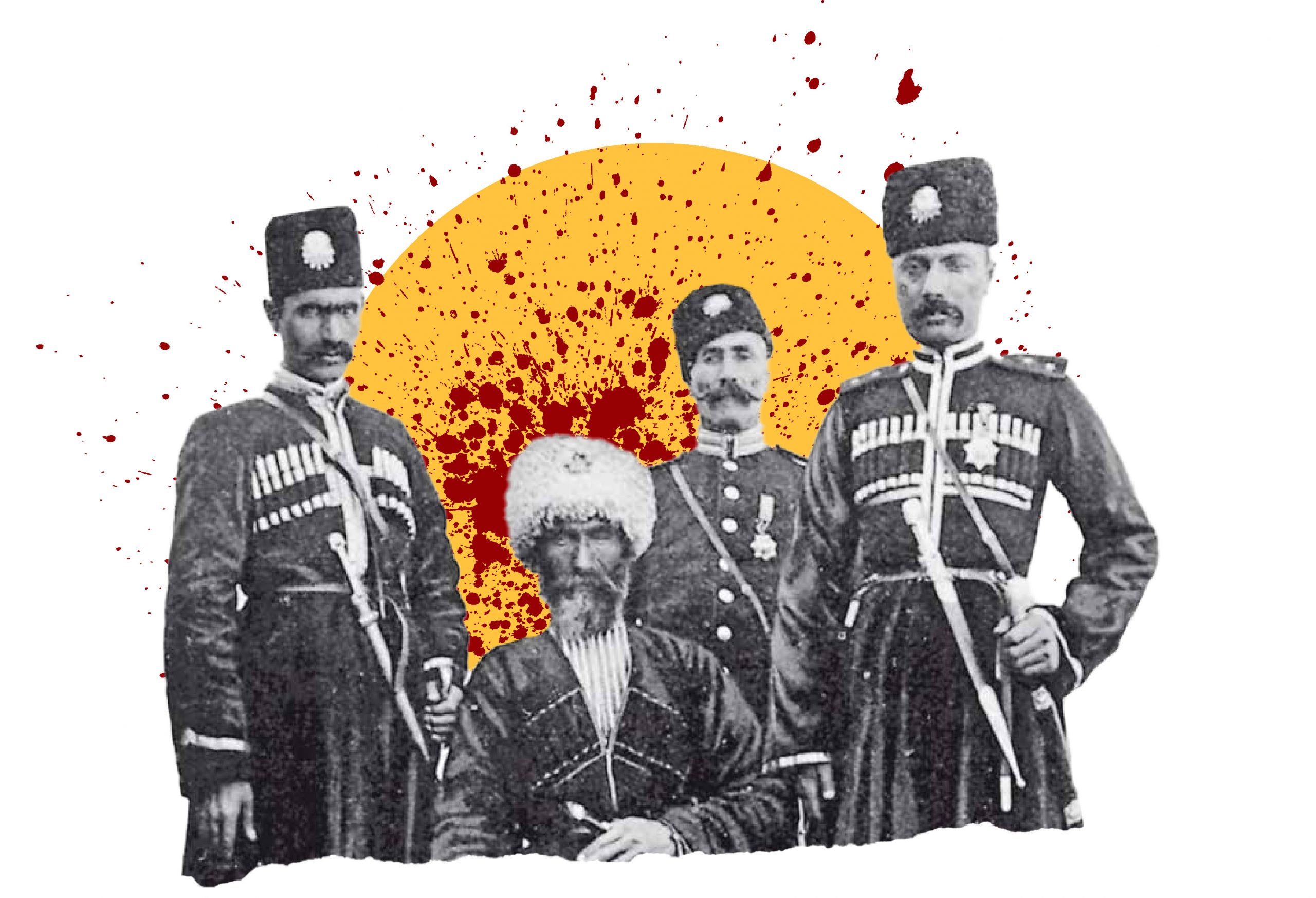
He organized his "knights" to kill innocent people
Abdul Hamid II:
started the Armenian massacres
The Ottomans placed non-Turkish races in a second degree after the Turk, regardless of affiliations and beliefs, as race was the basis of social status. An exception was made for the Jews, as the Ottomans treated them well from an early period, because of their economic benefit. The Armenians did not enjoy what the Jews did, despite the danger that the Jews represented, which led to the end of the Ottoman Empire.
Armenians have their origins in the Indo-European race, as they arrived in their lands BC immigrants from Cilicia , Syria and Iraq, and lived in the land that witnessed historical events of conflict between neighboring empires. When the Ottoman Empire was established at the beginning of the fourteenth century AD, it expanded in Anatolia to include most of the land inhabited by the Armenians. During the Ottoman-Persian War (1616-1534), the lands of the Armenians were divided into: Eastern Persian Armenia, that later on became Russian Armenia after the Russians seized it in 1828, and on the other side there is the Ottoman Western Armenia.
Armenians enter the Ottoman millet system, and they played a major economic role in Istanbul and in several fields: agriculture, industry and trade. Some of them engaged in government jobs, while the Armenians of the cities far from the Ottoman capital lived in poverty and ignorance, and were burdened by taxes, which were collected in a cruel and humiliating way by the Ottoman Turks. Despite this, the Armenians were most loyal to the Ottomans, which made the Ottomans call them the honest community.
In addition to the national spirit that spread during the last centuries of the Ottoman history, specifically at the beginning of the nineteenth century; Political and national ideas leaked out among the Armenians like other peoples and nationalities. This coincided with the entry of the Ottoman Empire into a weak stage in its systems, administration, and power. At the beginning of the reign of Abdul Hamid II, the Russian-Ottoman war broke out, and due to the weakness of the Ottomans, they lost to the Russians and concluded the Treaty of San Stefano with them. Article (16) of the treaty dealt with the need for the Ottoman Empire to undertake reforms in the Armenian provinces, and to protect them from Kurdish and Circassian attacks.
Global anxiety escalated after German Chancellor Ottophon Bismarck “Otto von Bismarck” called for the Berlin Conference to be held in the presence of an Armenian representation headed by the Patriarch of Istanbul Khremiyan to demand their rights in front of public opinion. Although the Armenian issue took on an international dimension; However, Abdul Hamid II took a solid decision towards it, as he refused any reforms or responses to the Armenians, so the Ottomans ignored the implementation of international treaties.
Abdul Hamid II pursued a policy of repression and tyranny, in light of the international powers’ preoccupation far from the Armenian issue, which forced the Armenians to activate their national movement by establishing revolutionary associations, which had active propaganda, calling for guerrilla and revolution against the Ottomans, and Russia was in support of them.
The Ottomans, headed by their Sultan Abdul Hamid II, nicknamed (The Red Sultan), confronted the Armenian national movement on two levels: On the social level, by endeavoring to settle the (extremist) Muslim clans side by side with the Armenian revolutionaries in Eastern Anatolia, and completely disregarding the crimes and abuse they commit against the Armenians, and on the political level by establishing an integrated project known as the (The Hamidiye Cavalry) that were formed from the Kurds to eliminate the Armenian national movement, with the aim of suppressing them, and salvation from their race that inhabited the lands of the Ottoman Empire. With this reckless and extremist behavior by Abdul Hamid II, the Armenian issue in the Ottoman Empire reached a critical and brutal juncture that escalated during (1894 – 1893), in which the massacres and ethnic cleansing operations against the Armenians were committed in a manner that had not been seen before.
He made the Armenians citizens of a lower class with the rank of "infidel".

This is in addition to what was deliberately provoked by Ottoman officials from revolutions in the densely populated Armenian cities, such as Sasson in (1894) and Zeitoun during the period (1896-1895). The Hamidiye Cavalry were increasingly using violence to deal with Armenians through persecution and pogrom. On the other hand, the Armenians resisted some of the cavalry attacks and succeeded in repelling them.
In May (1895), the European powers forced Abdul Hamid II to sign new reforms aimed at reducing the powers of The Hamidiye Cavalry, but they were not implemented, such as the Treaty of Berlin. In October of the same year, 2,000 Armenians met in Istanbul to petition to implement reforms, but Ottoman police units violently dispersed the gathering. After that, massacres broke out against Armenians in the capital Istanbul itself, spreading to the rest of the regions, especially the districts inhabited by the Armenians in Badlis, Diyarbakir, Erzurum, Harrods, Sivas, Trabzon and Van “Wanê”.
Statements differ about the number of Armenians who were killed, while European documents of the massacres, which became known as The Hamidiye massacres, put the numbers between 100,000 and 300,000 people who died in the massacres of Abdul Hamid II.
During his reign, more than 300,000 Armenians were killed in the so-called purges.

Abdul Hamid II is accused of being the first to carry out massacres against Armenians and other Christians who were under the rule of the Ottoman Empire. During his reign, The Hamidiye massacres were carried out, where hundreds of thousands of Armenians, Greeks and Assyrians were killed for various economic and religious reasons, and the liquidations were between the (1896-1894).
The Ottoman bank was seized by a group of members of the Armenian Revolutionary Union and this happened out of frustration with European indifference to the massacres. This incident brought greater sympathy for the Armenians in Europe and was praised by the European and American press, which denounced Abdul Hamid II and depicted him as the “great murderer”, “the bloody sultan”, and the “unjust ruler”. The major powers pledged to take measures and impose new reforms, but this was also not implemented due to conflicting political and economic interests.
That incident led to an attempt by a member of the Tashnak organization to assassinate Abdul Hamid II in 1905, by blowing up his vehicle upon leaving the mosque. This incident also led to the revolution of the Young Turk movement in (1908), which overthrew the Sultan himself, in addition to other massacres in Cilicia , such as the Adana massacre in which about 30,000 Armenians were killed.
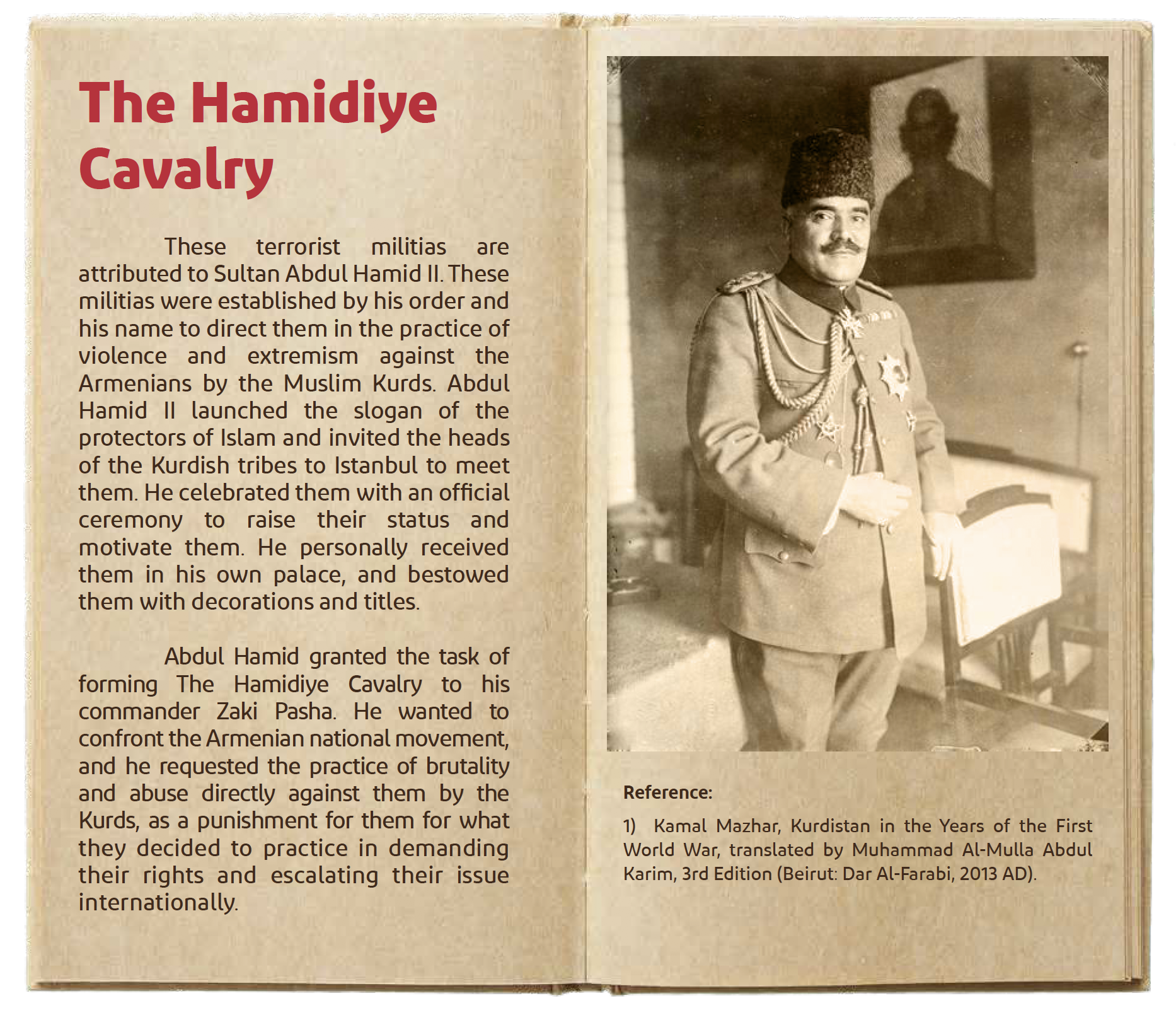
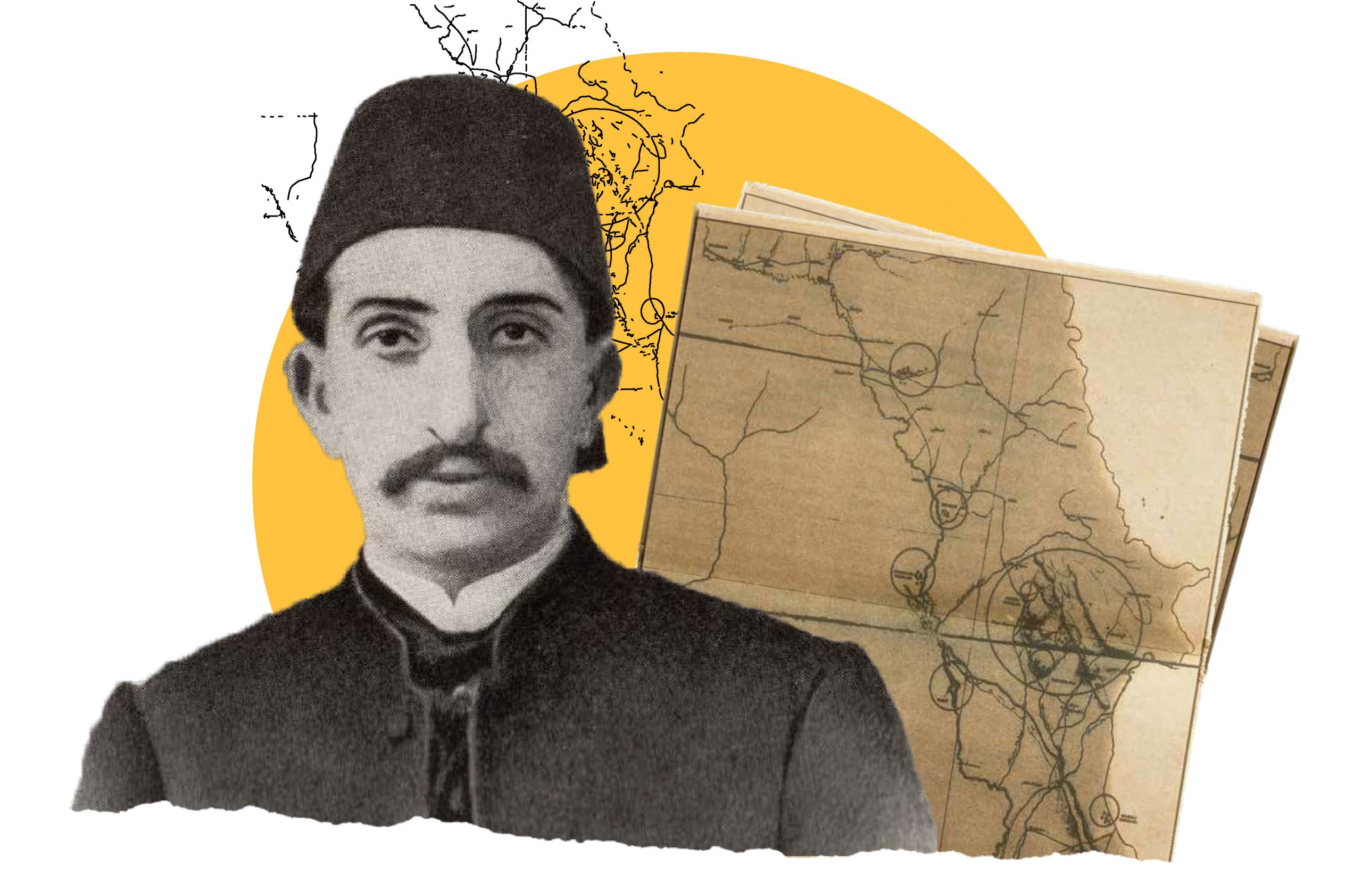
After he had forged documents and changed maps
Abdul Hamid II The Sultan
who stole Iraq's oil
He brought in engineers with his own money and tried to own the oil wells.

In 1901, Paul Graskov and Habib Najib Effendi were commissioned directly by Abdul Hamid to discover and control the fields. Realistically, oil exploration began in 1885. At that time, the Ottoman engineer Aref Pasha presented a preliminary report on the fields expected to be discovered in Iraq; in Baghdad and Mosul, and identified them on the map prepared specifically for that, and the report included an indication of the locations of sulfur, dyes and salts with the oil fields. The report confirmed the abundance of oil in the region, which prompted Abdul Hamid to issue a decision to include exploration and operation concessions for oil in Mosul to his personal account.
Abdul Hamid was also forced to buy all the lands in which he discovered oil from his personal accounts, and he invited foreign experts in oil and mining to carry out exploration operations. The French expert Émile Jacraz was one of those who agreed to come and was appointed as chief engineer. At that time, the Iraqi fields were not included in Abdul Hamid’s properties. Jacraz submitted a report on oil in Baghdad, and he also conducted studies on oil in Mosul and Kirkuk. In 1895, Jacraz had finished his final conception of Iraqi oil, made recommendations about the rich oil sites and how to deal with them in an optimal manner, as well as an overview of the expected costs of investing in oil extraction, and the factories that could be established for that. It was stated in Jacraz’s report and his recommendations that the exploration concessions in Baghdad belong to the treasury of Abdul Hamid II, and accordingly work began in this light in Baghdad and Mosul.
After Jacraz, the German engineer Graskov came in 1900 to employ his experience in exploration and mining, and he received a high salary by the standards of the time. This was during the period when the Ottoman-German rapprochement increased. Graskov worked on his exploration mission by examining the oil fields in Baghdad and Mosul. He made oil inspections with the Ottoman engineer Habib Najib Effendi, especially in the locations where it was difficult to work according to the expectations. They prepared a joint report stating that the fields in Baghdad and Mosul enjoy very high oil abundance, and they extracted a number of samples that they sent for examination in Istanbul, which were proved as being rich in crude oil materials, which are among the most suitable types of oil suitable for operation. At the end of 1901, Graskov presented a report that included an updated map of the locations of the expected oil wells in Iraq. He indicated in his report that what is expected to be extracted from crude oil will be very attractive from the material side, considering that it is one of the most oil-producing resources in the world.
He marked 65 oil wells as villages on the Iraqi map.




